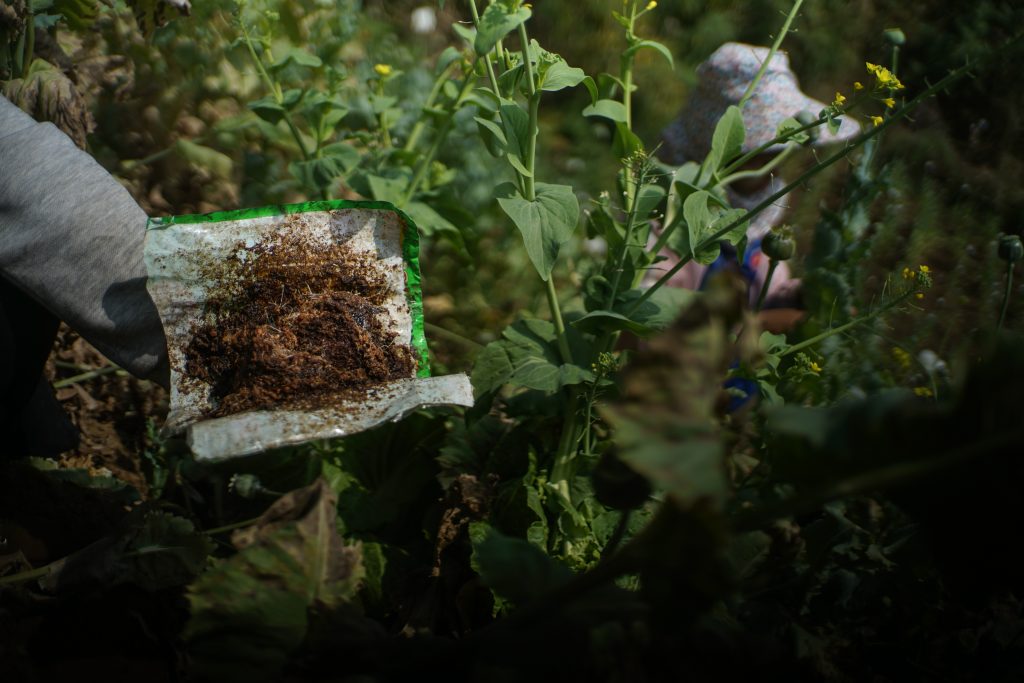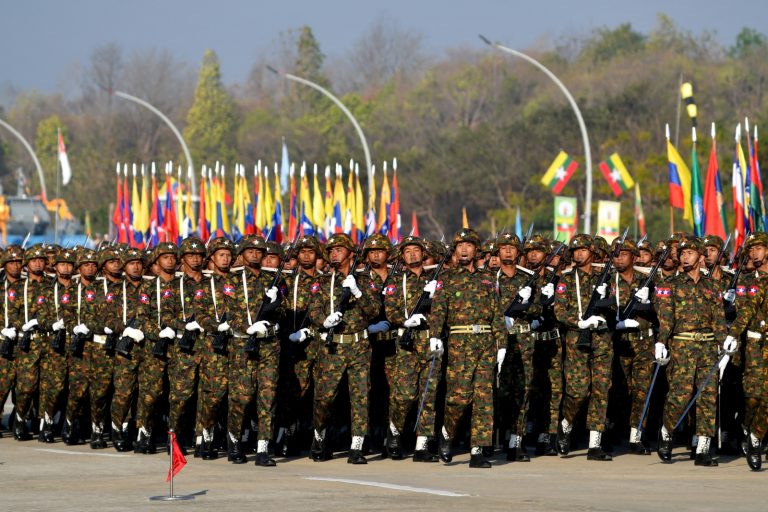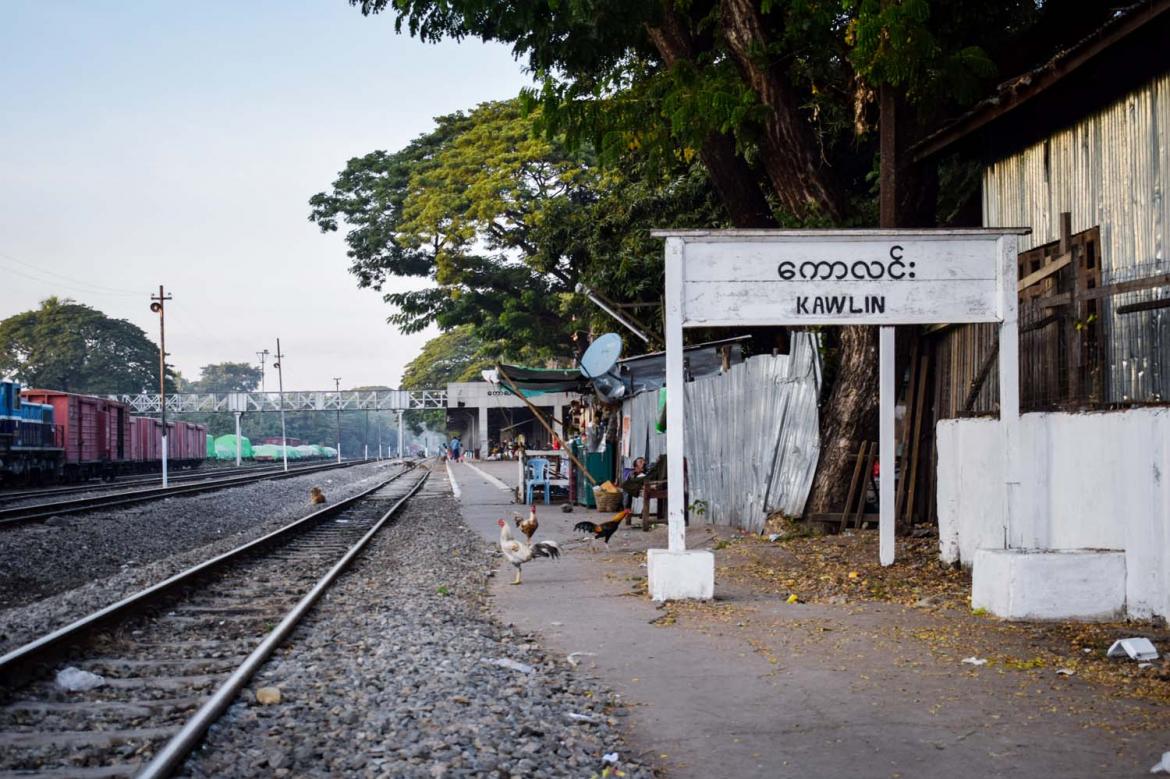Falling incomes due to the pandemic and coup, and impunity for the military and pro-junta armed groups, have created ideal conditions for a rise in opium cultivation in Kachin State.
By EMILY FISHBEIN, ZAU MYET AWNG and JAUMAN NAW | FRONTIER
Twelve years ago, when she was in eighth grade, Hkaw Nyoi harvested opium poppies for the first time during her school holidays.
In the Sadung area of Kachin State’s Waingmaw township, about 55 kilometres due east of the state capital, Myitkyina and near the border with China, she worked seven days a week from 5am until dusk. For a 12-hour day, she was paid CNY50, the equivalent of about K10,000 at the time.
“It was not my ambition, but because I had to continue my schooling, I had no other choice,” said Hkaw Nyoi, a pseudonym. “I continued my education with the money I earned from that work.”
After Hkaw Nyoi graduated from university in 2020, the pandemic and coup left the 26-year-old jobless for nearly two years.
“I wanted to apply for jobs, but businesses were closed because of COVID-19. Then the coup happened, and that made it even harder to look for jobs. Now, I don’t know how to continue moving my future forward. I am just waiting for what God will plan for me,” she told Frontier on November 2.
In December, Hkaw Nyoi narrowly avoided another season on a poppy farm when she was offered a teaching job at a school administered by the Kachin Independence Organisation.
But others may have little choice.

The coup has wiped out incomes and depleted savings across Myanmar which were already suffering from the pandemic. In April, the United Nations Development Programme forecast that half of the country’s population could find themselves in poverty by 2022. A World Food Programme report covering the August to November 2021 period identified Myanmar as a “hunger hotspot” and warned of an increase in acute food insecurity.
Mr Benedikt Hofmann, country manager for Myanmar with the United Nations Office of Drugs and Crime (UNODC), told Frontier that there was a “strong connection” between poverty and opium cultivation in Myanmar, and said that the economic fallout since February was likely to push farmers in opium-producing areas further into poverty and leave them with fewer alternatives to growing poppies.
“A key reason farmers get involved is to make a livelihood when they often have few other options in rural, often conflict-prone areas,” he said. “With the economy in free fall since February – including rising unemployment, cash shortages, and few legal opportunities in areas that had few in the first place – we expect that more farmers may reconsider opium.”
‘Rich people invest a lot of money’
Myanmar is the world’s second-largest opium producer after Afghanistan, with most of the crop cultivated in remote, mountainous areas.
The UNODC estimated in its 2020 Myanmar Opium Survey that 405 tonnes of opium, the raw material for making heroin, was harvested from nearly 30,000 hectares in the 2019-20 season. Shan State accounted for most of the production, at 84 percent, followed by Kachin with 12pc, with the rest grown in Kayah and Chin states.
Frontier focused on opium production in Kachin State for this report and did not explore dynamics in Shan State.

According to local sources and the UNODC, even as local farmers have fewer alternatives to growing poppies, they are unlikely to see much economic benefit.
In the Kanpiketee area of Waingmaw Township near the China border, Bawm Ying, who owns about two acres (0.8ha) of farmland, told Frontier that business has become harder as a result of the pandemic due to factors including an increase in the cost of fertiliser and other goods. “When products from China could not be imported to Myanmar, market prices became so high,” said the 27-year-old, for whom Frontier has used a pseudonym.
She employs two or three workers full time and hires another four during the harvest season, who are paid about CNY50 (K14,000) a day. Her farm produces between about 7 viss to 8 viss of opium a year, which she sells to Chinese buyers for CNY3,000 (K837,000) per viss, a Myanmar measurement unit equal to 1.632 kilograms.
“If the soil was good, one acre could produce about 20 viss (32.64kg) of opium, but the soil has already been destroyed by intensive fertiliser use,” she said.
Nearly everyone in her village of about 20 households grows poppies, according to Bawm Ying, but it is hard to earn a living from the work. Some cultivate the land themselves, while others rent to Chinese nationals for between CNY1,000 and CNY2,000 a year (K278,000 to K558,000 at current exchange rates) for a plot of one or two acres.
“It is not profitable production. I am not doing this business intentionally, but just because we do not have other choices here,” she said.

In Tanai Township, a senior member of the Kachin grassroots drug eradication movement Pat Jasan, who spoke on the condition of anonymity, said farm workers earn about K8,000 a day for harvesting opium (the national minimum wage is K3,600 per day).
“The ones who profit are those who invest a lot of money in poppy farming, and also those who sell the products. They work together with high-ranking officials,” he said.
Colonel Naw Bu of the KIO’s information department said that Kachin people “don’t profit much from poppy farming. It may seem that they can support their families by farming poppies, but it actually doesn’t happen that way.”
“Rich people invest a lot of money in poppy farming in [Kachin] and get huge profits. They destroy our land and let our people work for them. Therefore, poppy farming can damage our people’s development,” he said.
The UNODC also identifies large disparities between growers and those involved in other aspects of the drug trade. Its 2020 survey found that, even before COVID-19, opium farmers earned less than 10pc of the money generated by the opiate economy, and that the price for fresh opium had declined by more than half since 2015. Compounded by trade disruptions and a shortage of buyers, opium poppy farmers were likely to “continue facing downward pressures on income for their subsistence,” said the survey.
The UNODC’s Hofmann told Frontier that farmers in opium-producing areas are likely to have fallen further into poverty since the coup, while the “real profits” from the industry continue to be made by heroin producers, traffickers and transnational organised crime groups.

‘When they order me to pay, I must’
The UNODC’s 2020 opium survey describes a “long standing connection between drugs and conflict in Myanmar”, but does not name any armed actors. Hofmann said that there was a “clear connection between territorial control and opium cultivation”.
“If nothing else, some will use opium to reinforce budgets and buy guns or modernise arsenals,” he added.
Hofmann also declined to name any armed actors when speaking to Frontier, but all other sources interviewed for this article said opium production in Kachin currently occurs in areas under the control of the military, Border Guard Forces (BGFs) – which are under its command – and military-aligned militias.
“All the poppy farms are in military-controlled areas; that’s very clear,” said Dr Hkalen Tu Hkawng, the National Unity Government’s minister for natural resources and environmental conservation.
Hkaw Nyoi, the seasonal worker, said there were no poppy farms in the area of Sadung where she lives because it is under KIO control. “But there are poppy farms in BGF-controlled areas, so we go there every year to work,” she said. “I used to work at a poppy farm in my area, but the KIO and Pat Jasan stopped the growing of poppies so there are no poppy farms left.”
The area of Sadung where she has harvested poppies in recent years is under the control of a BGF led by Zakhung Ting Ying. He also leads a militia that is active in the area, and sometimes Tatmadaw soldiers come to collect informal taxes on opium production, Hkaw Nyoi said. A former KIO officer who led a breakaway faction in 1968, Zahkung Ting Ying controls a stretch of territory along Kachin State’s border with China that is a hotspot for illicit business, including illegal mining of rare earths.
The senior Pat Jasan member in Tanai township said that last year, there were “almost no poppy farms in KIO-controlled areas. [Growers] select areas to establish poppy farms where the KIO doesn’t have full access … Usually, these areas have protection from the military.”
In Kanpiketee, Bawm Ying said that she has to pay an annual tax of about CNY100 (K28,000) to a local militia, BGF and the military. “Farming poppies is not safe all the time… I don’t know when I will get caught, or what will happen or when,” she said. “I have to pay them all. It is an illegal business. When they order me to pay, I must.”

‘A distortion of reality’
Who controls the territory under which opium production occurs became the subject of a heated controversy after the UNODC released its 2018 Myanmar Opium survey, which it published jointly with the National League for Democracy-led government.
The survey, which relied on satellite imagery, identified 37,300 hectares of opium cultivation in the 2017-18 season, including 3,400 in Kachin State, and claimed that the highest density of opium cultivation in Kachin was in areas under the control or influence of the Kachin Independence Army, the KIO’s armed wing.
The Transnational Institute, which conducts research and advocacy on opium production and drug policies in Myanmar, called the UNODC’s claim a “distortion of reality” which “appears to deliberately confuse the realities on the ground”.
“Our local sources … confirm the KIO claim that there is presently no substantial opium cultivation in KIO-controlled areas,” it said.
The KIO responded furiously to the report, accusing the UNODC of “siding with the Myanmar government to cast unsubstantiated aspersions against the KIA [that] will only hinder, not support, peace-seeking efforts”.
In a written response, the UNODC stood by its findings but said its report did not “aim to describe precise control of a particular area”; it also reiterated its commitment to “support the Government of Myanmar and other stakeholders in addressing the drug epidemic and related organized crime.”
Months later, the KIO’s Drug Eradication Committee published its own survey, the Drug Issue Report, which covered the period of July 2018 to March 2019 and was based on nearly 10,000 interviews and surveys in 19 townships across Kachin and northern Shan State.
It found that 6,900ha of poppies – nearly twice as many as identified by the UNODC – were cultivated in Kachin State during the 2018-19 growing season, of which 67pc were grown in the Kanpiketee area, 15pc in the Sadung area, 14pc in Tanai Township, and the remaining 4pc across Sumprabum, Putao and Hpakant townships.
The report also said that all stages of the drug trade, including poppy growing, were “protected and supported by local pro-government militia groups, Burma Army [Tatmadaw] and police officers, who make money from taxation and bribes.”
The KIO called on the government to “start taking responsibility for comprehensive law enforcement against narcotic drugs, including cracking down on corruption at every level”.

The ‘common enemy’ of the Kachin people
In the context of the armed struggle that the KIO has waged for self-determination since 1961, many Kachin people believe that the longstanding failure of the Myanmar authorities to tackle drug production and addiction in Kachin and northern Shan, where many Kachin people reside, is part of a deliberate strategy to weaken and destroy the Kachin people, and have even called it a “slow genocide”.
This perception has contributed to militant efforts by both the KIO and Kachin public to root out drugs from their society.
Colonel Naw Bu of the KIO described drugs as the “common enemy” of the Kachin people. “They can destroy the development of our future generations. The BGF and militia [groups] become the hand and leg of the dictators for farming poppies, dealing and using drugs,” he told Frontier.
The KIO, which introduced its first anti-drug policy in 1964, declared Kachin to be an “opium free state” in 1991, and banned cultivation and trafficking. Two years later, it began an intensive campaign to root out opium growing, drug distribution and drug abuse in its territories, according to its 2019 report.
The KIO claims to have brought these issues under control in its territories by 2014, but rampant drug problems in other parts of Kachin prompted Christian leaders and members of the public to establish Pat Jasan in the same year. It has since engaged thousands of volunteers in drug eradication, awareness and rehabilitation activities – some of which have garnered controversy, including the use of raids, beating and detaining addicts, and destroying poppy fields.
In 2016, after a standoff with authorities, more than 1,000 Pat Jasan volunteers travelled by foot to opium growing areas in Waingmaw Township and cut down hundreds of hectares of poppies. But during a second mission, they faced ambushes and armed attacks that they said were conducted by military-aligned militias and farmers. More than 30 people were injured and admitted to hospital before the mission was forced to retreat.
For many Kachin people, the incident fed feelings that authorities were complicit in Kachin State’s drug problems. “The government doesn’t handle and control this matter. They even want to make an enemy with us who tried to eradicate poppy farms. There was killing, violence, misunderstandings and hatred among the people,” Pat Jasan’s current spokesperson told Frontier in November on condition of anonymity due to safety concerns.
He said that the group has, since 2016, shifted its approach away from poppy field destruction toward awareness-raising and education – not only because of the risks and challenges, but also because it has come to support a more holistic approach.
“Just destroying poppy fields is not enough. Just cutting poppies with knives is not enough; it will even make the poppy plants grow better. The poppy plants must be plucked from the roots. To eradicate the drug issue from our Kachin society, first we need to fix the foundation,” he said. In addition to Pat Jasan’s awareness-raising efforts, he also highlighted the importance of economic development and job creation, as well as strong legal policies.

Corruption and instability
The poppy harvest season began in December and for now it is too early to say whether the February coup has affected opium cultivation.
The KIO and Pat Jasan say they have been unable to collect data this year due to the pandemic and political situation, while the UNODC collects data annually during the harvest season.
But sources told Frontier that increased conflict and insecurity and weakening rule of law could contribute to a spike in production.
Hkalen Tu Hkawng of the NUG said opium production in Kachin was already difficult to control because it occurred under the protection of the military, BGFs and militias aligned with it.
The coup is likely to enable the groups that profit from opium cultivation to operate with greater impunity, Hkalen Tu Hkawng said, in comments that were echoed by Pat Jasan.
“Because the country’s situation is not stable, plus there is corruption, it is easy to engage in the opium business,” he said. “Changing the political situation is very important”.
Sources from Pat Jasan also said that the coup appears to have crushed any prospect of the authorities or civil society addressing the state’s drug problems.
“Local people who oppose addictive drugs do not dare do their activities after the coup. In this situation, if you do something, there are a lot of troublemakers,” said a senior Pat Jasan member in Waingmaw Township, speaking on the condition of anonymity. “We had to abandon our activities.”
He also emphasised the importance of strengthening the rule of law. “When we look at the drug problem in Myanmar, it is totally related to political conditions,” he said. “If you want to solve drug problems, you must solve political problems in Myanmar.”
The Pat Jasan spokesperson added that self-determination under a federal system will be critical to addressing opium production and drug issues in Kachin, because drug policy and enforcement could be formally and systematically managed at the state level.
“To clear the drug issue, our country’s situation must be stable first. Our people must have the right to self-determination,” he said. “If Kachin State is given self-determination, this problem will be solved – even if not completely, to a significant extent.”
This article was supported by the Pulitzer Center Rainforest Journalism Fund.








